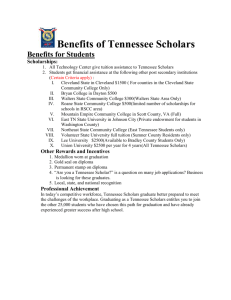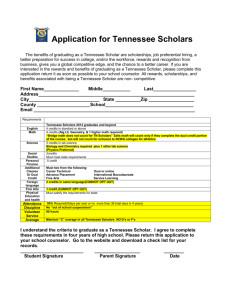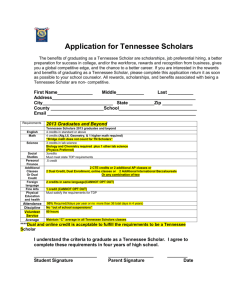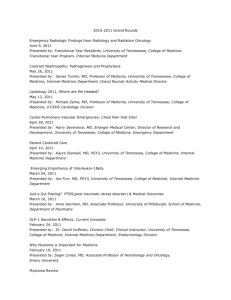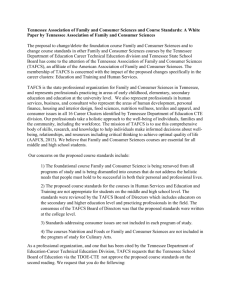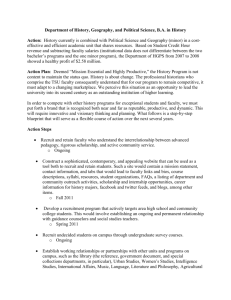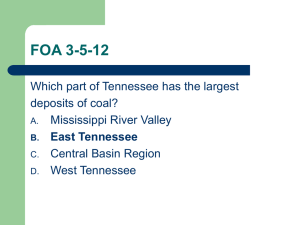Tennessee Symbol
advertisement
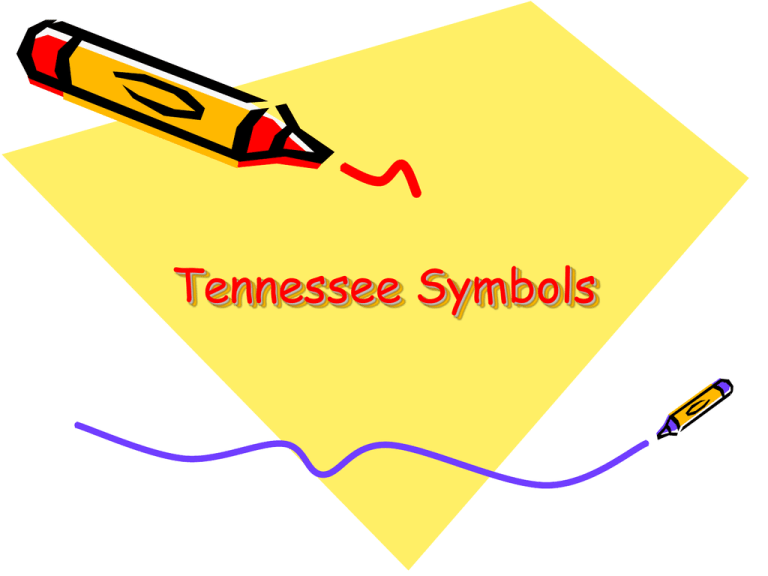
Tennessee Symbols State Seal The State Seal The Roman numerals XVI signify that Tennessee was the 16th state to enter the Union. The plow, the sheaf of wheat, and a cotton stalk symbolize the importance of agriculture. The riverboat attests to the importance of river traffic to commerce. State Bird The mockingbird (genus Mimus polyglottos) was selected as the state bird in 1933. One of the finest singers among North American birds, it has a melodious song of its own, and is especially noted for its skill in mimicking the songs of other birds. State Insects Tennessee has two official state insects: the firefly and the ladybug. The firefly emits a luminescent light easily seen on summer evenings. The light is a natural form of incandescent light that man has never completely duplicated. The reddish-orange ladybug has distinctive black spots on each wing cover. It helps farmers by controlling insect pests, especially aphids. In folk medicine, ladybugs were believed to cure various diseases such as colic and measles. State Gem Tennessee river pearls are taken from mussels in the freshwater rivers and come in various shapes and colors. Unlike cultured pearls, which are partially man-made, these pearls are totally made by the mussel. They are 100% natural pearl all the way through. State Capitol In Tennessee's early history, four different towns served as the seat of government: Knoxville, Kingston, Murfreesboro, and Nashville. Nashville was chosen as the permanent capital in 1843. The capitol was designed by noted architect William Strickland, who died during its construction and is buried within its walls. Marble quarried in Tennessee was used as the primary building material. A magnificent example of Grecian architecture, the building was begun in 1845 and completed in 1859. State Flag Adopted in 1905, the flag features three stars representing the grand divisions of the state: East, Middle, and West. The stars are bound together in indissoluble unity by an unending white band. State Tree and Flower The tulip poplar (Liriodendron Tulipifera) was adopted as the state tree by the State Legislature in 1947. The tulip poplar was chosen because it was used extensively by the Tennessee pioneers to construct their houses, barns, and other buildings. The iris (Genus Iridaceae) was designated as the state cultivated flower by the legislature in 1933. While there are several different colors among the iris, the purple iris is commonly accepted as the state flower. State Animal The raccoon (Procyon lotor) is a furry mammal with a bushy, ringed tail and a masklike band of black hair around its eyes. Raccoons eat fish and frogs that they catch in rivers and streams. They measure from 30 to 38 inches long and weigh from 12 to 25 pounds. The State Songs Music is such an integral part of Tennessee's heritage that there are five official state songs: My Homeland, Tennessee ... When It's Iris Time in Tennessee ... My Tennessee ... Tennessee Waltz ... and Rocky Top. Civil War, Smoky Mountains, Aquarium, and Grand Ole Opry
